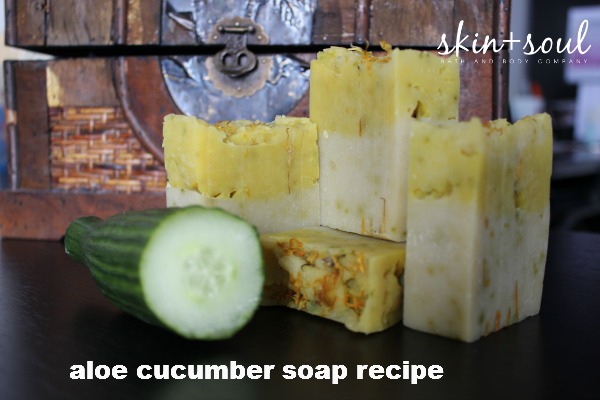There are many natural soap colorants that you can add to your soap recipes that are earth-sourced. Coloring your soaps naturally has many benefits, it:
- produces beautiful colors;
- avoids unwanted and artificial chemicals;
- doesn’t add to the pollution of our waters;
- can bring additional skin enhancing benefits.
Soap colorants come in many forms such as dyes, micas, oxides and pigments.
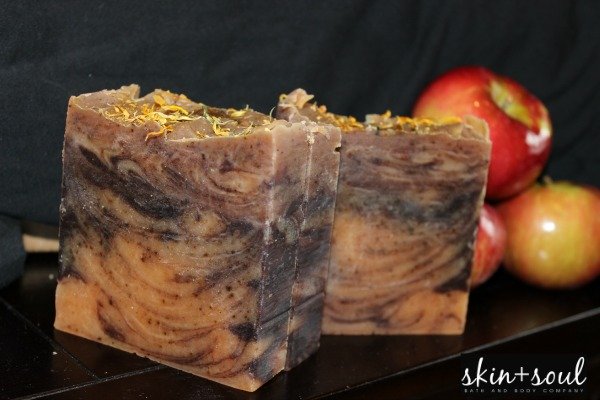
soap colored with apple cider, cocoa powder, clove and paprika
When I began soapmaking I researched natural soap colorants because I wanted to stay as close to a natural product as possible. Herbs, flowers, spices and clays give nice soft hues and tones. The trade off is that natural soap colorant may seem limiting to those who wish to venture in bold and vibrant colours.
Here are ways to get colour using ingredients from your kitchen or garden. You may need want to look into ordering from a soapmaking supplier for some specialty natural soap colorants.
words of advice
- start with less;
- test, test, test (start with small batches);
- scent of most botanicals do not resist saponification in cold and hot process soapmaking. Keep your floral waters for other projects (the only one that I’ve found that does make it through are juniper berries which leave a nice soft scent;
- many oils already offer some colour: for instance olive oil comes in a variety of hues.
infused oil
You can infuse your oils with flowers, herbs, spices and powders. Choose based on the colour you want. I infused some oil with some sage that grew abundantly in my garden. It is best to use dried herbs, spices and flowers.
water replacement
You can replace the distilled water in your lye solution with other liquids to give your soap some beautiful colours. Instead of water use coffee, red wine, beer, juice and fruit or vegetable purees. Avoid citrus fruit which is acidic and will react with the lye in your recipe.
Please note that you should refrigerate or freeze the liquid replacement if it contains natural sugars because the sugars in some of the liquids may burn.
Want to try a recipe using carrot juice as a natural soap colorant? Recipe for a natural soap with carrot juice, honey and ginger.
Purees can offer some nice color and some soapmakers value the antioxidant properties of various fruits and vegetables, especially when they are bountiful in season.
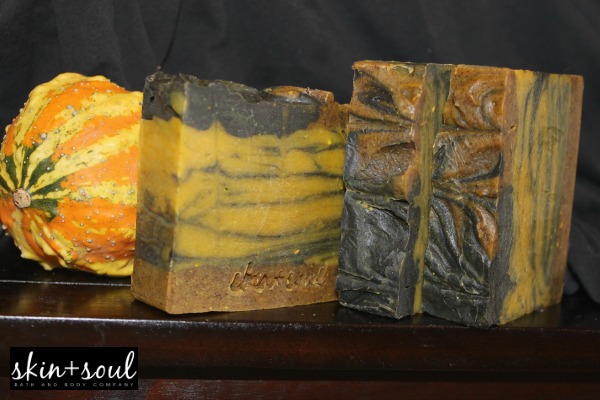
soap colored with pumpkin puree, charcoal and vanilla bean specks
herbs, spices, flowers and powders
Certain herbs and spices are natural colorants and can be added to your lye-water, to your oils or at trace. When I add them at trace I do take a bit of my oils to mix the powder and ensure consistency.
Many of these natural colorants add texture and can be exfoliating such as parsley, sage, vanilla bean specks and lemongrass. Be sure that the ingredient is not too scratchy.
This is a starting list of possibilities. You can delve deeper into the world of options with the kindle book.
This is a starting list of possibilities. You can delve deeper into the world of options with the “107 Natural Colorants for Cold Process Soap”.
BLUE TO PURPLE
- alkanet root
- indigo
- madder root
BROWN
- all spice
- cocoa powder
- cinnamon
- clove
- molasses
- nutmeg
- peppermint
- sandalwood powder
- vanilla bean specks
- walnut hull
GREEN
- alfafa (dried)
- basil
- comfrey leaves
- chlorophyll
- dill
- green tea powder
- kelp
- parsley
- spinach (dried and ground)
- stevia powder
- wheatgrass powder
- sage
- spirulina
- tea leaves
YELLOW TO ORANGE
- annatto Seed
- carrots (dried and ground)
- calendula
- cayenne pepper
- chamomile
- curry powder
- lemon zest
- mace powder
- orange zest
- paprika
- safflower petals
- saffron
- turmeric
- yarrow
clays and minerals
You can colour your soap and add therapeutic properties by adding minerals and clays to your soap. Clays also add “slip” which refers to the smooth glide in a soap.The ratio varies from 1 teaspoon to 1 tablespoon per pound (454 grams) of oils.
- activated charcoal – very dark grey to black
- bentonite clay – green to grey to brown
- dead sea mud – green to grey
- rose clay – light pink
- kaolin clay – available in many colors (white, yellow, green)
- red morrocan – red to dark brown
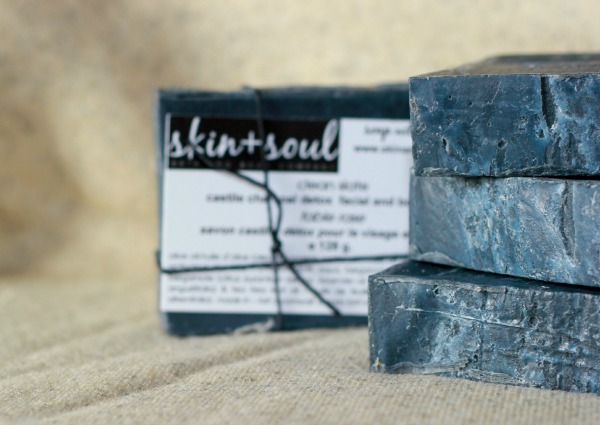
castile olive oil soap using activated charcoal powder
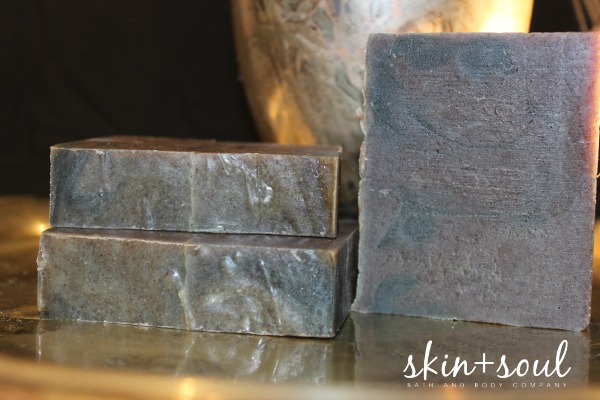
soap coloured with bentonite clay and activated charcoal
